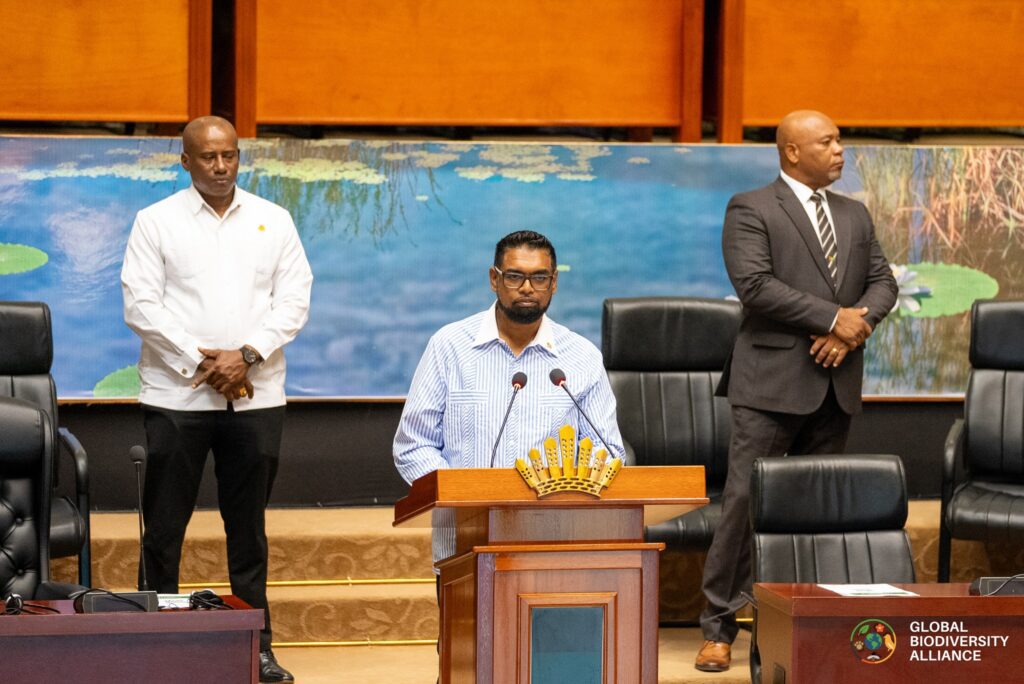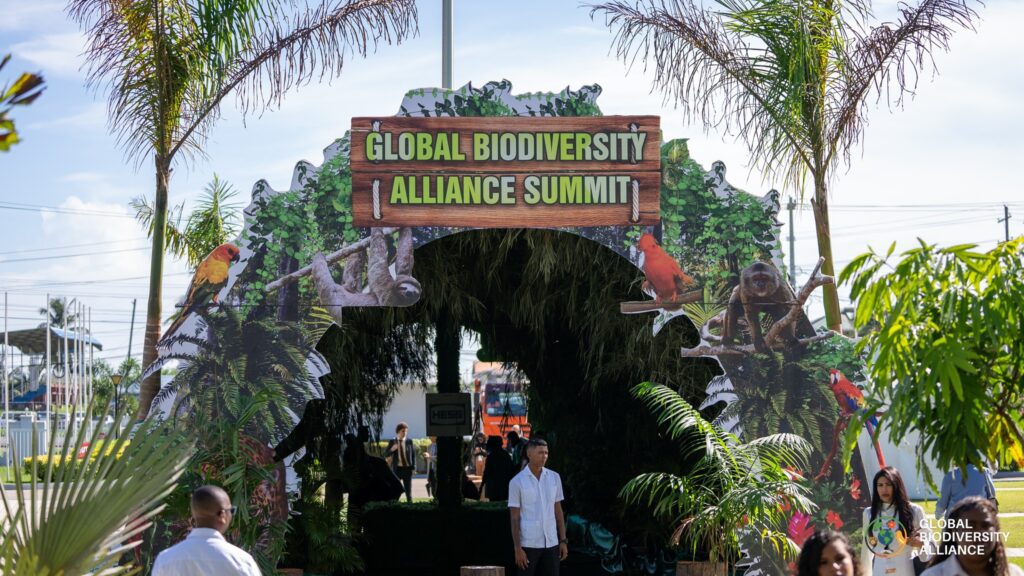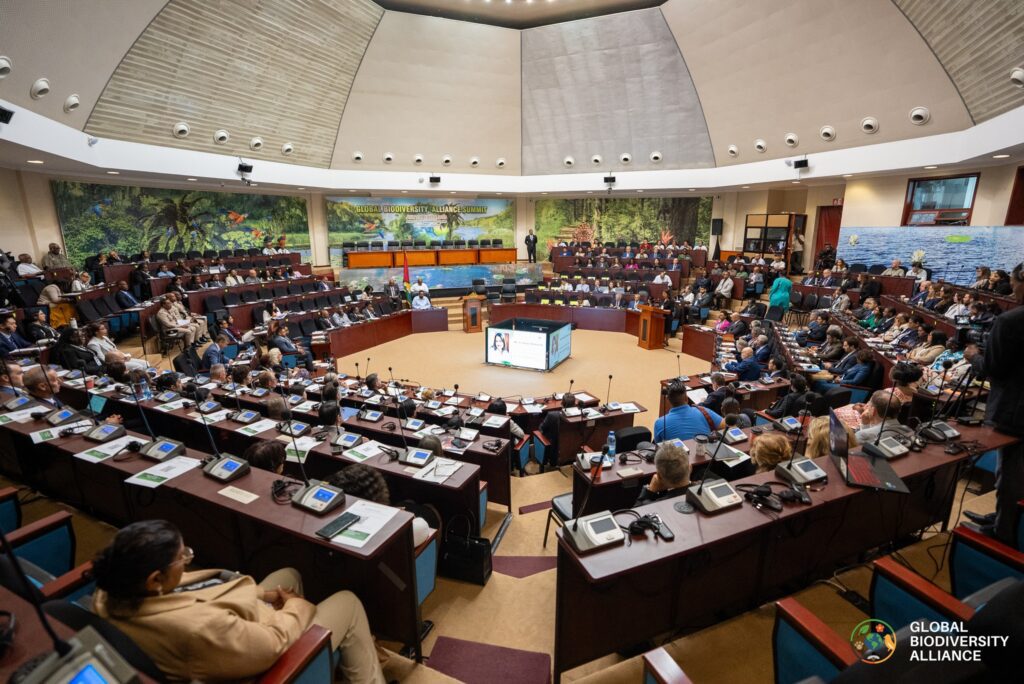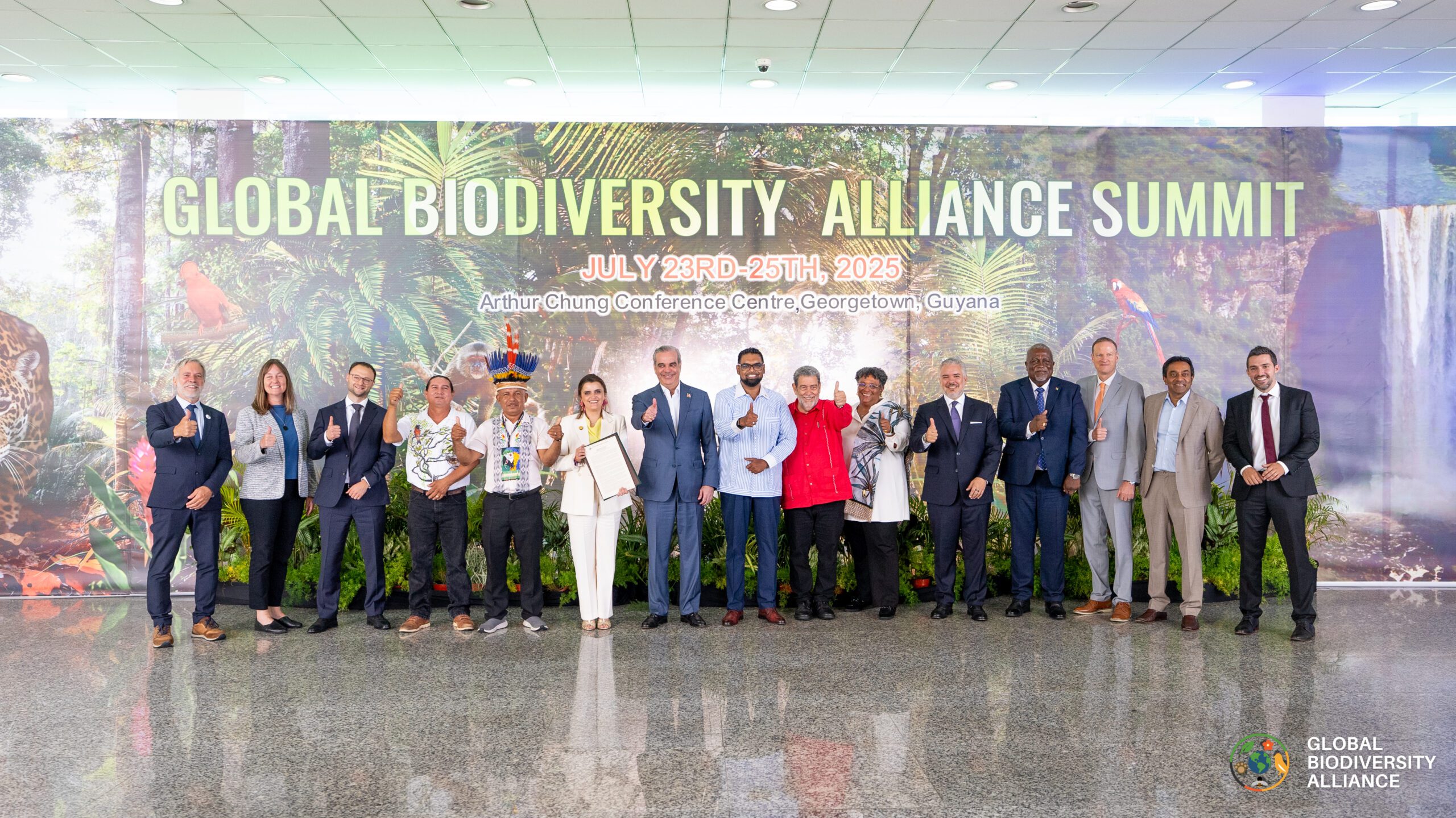Let’s face it, climate change is here, and its impacts are glaring. The world no longer needs planning; it demands real action and tangible results. That is what is expected to come out of the Global Biodiversity Alliance Summit, launched on July 23 in Guyana, at the Arthur Chung Conference Centre.
It’s President Irfaan Ali’s brainchild, bringing together world leaders looking to formalize the Global Biodiversity Alliance, launch innovative financial mechanisms like biodiversity credits, green bonds and debt-for-nature swaps, and promote the United Nations’ 30×30 Goal, which aims to conserve at least 30% of the planet’s lands and oceans by 2030.
Of course, plans can be made, but the requisite financing must be there to back it. And the world needs a lot of it to protect the earth.

“Biodiversity remains grossly underfunded,” Ali underscored during the opening ceremony. “Today, we invest just US$200 billion per year in nature. But to meet the Global Biodiversity Framework targets, we need at least US$700 billion annually. That means we must more than triple global finance for nature. And we must ensure that this finance flows to where it is most needed, especially in the Global South,” the President stated.
The Global Biodiversity Alliance will make this a top priority, Ali affirmed.

Guyana’s unique position, balancing hydrocarbon production with the protection of its lush greenery, is widely known. But its economic value was put to paper in a new analysis from McKinsey & Company and Conservation International, the President said.
Issuance of ART credits to Guyana a breakthrough for global carbon market, says Norway | OilNOW
“Guyana’s ecosystems provide over US$15.2 billion per year in ecosystem services. An overwhelming 96% of that value comes from non-market services, those invisible benefits we all rely on but never pay for. Genetic resources alone – from plant compounds with medicinal potential to unique species traits – are worth US$8.4 billion annually. Existence and bequest values what our people are willing to pay to preserve nature amount to US$3.6 billion per year,” he shared.
“The forests of Guyana – not being cleared, not being sold, not being converted – are providing more economic value by standing than they would if destroyed. This is the very essence of a nature-positive economy,” President Ali added.
At its conclusion, the Summit is expected to deliver a joint declaration on biodiversity, secure financial commitments for conservation and launch Action Plan 2025, a five-year roadmap with measurable goals. It will also identify pilot projects in key countries, driven by data from the Global Biodiversity Product and a biodiversity index.

Among the attendees at the Summit opening were Luis Abinader, President of the Dominican Republic; Dr. Ralph Gonsalves, Prime Minister of Saint Vincent and the Grenadines; Mia Mottley, Prime Minister of Barbados; and María José Pinto, Vice President of Ecuador. Also in attendance were Iván Duque Márquez, former President of Colombia; Periasamy Kumaran, Vice Minister in India’s Ministry of Foreign Affairs, and other top officials.
As host, Guyana aims to highlight its leadership in conservation and position itself as a global sustainability model. The country has demonstrated its ability through the sale of high quality, internationally certified carbon credits. Hess Corporation, a partner in the Summit, was the first oil company to purchase Guyana’s carbon credits.
Guyana has almost 20 million hectares of rainforest, estimated to store around 20 billion metric tons of CO₂. It has been issued 33.47 million carbon credits under the Architecture for REDD+ Transactions (ART) for the 2016–2020 period. The credits are certified under the TREES standard for large-scale forest conservation.
Apple is the latest buyer, purchasing 100,000 “vintage 2019” credits to offset emissions. The tech company said in its 2025 Environmental Progress Report that the credits were retired in 2024 and are part of its “high-quality carbon credits” portfolio.



